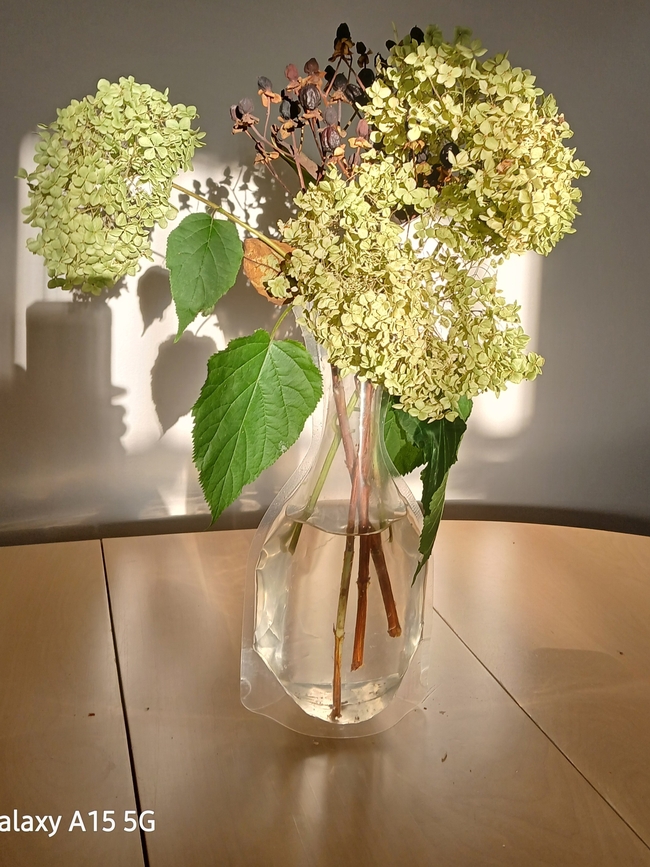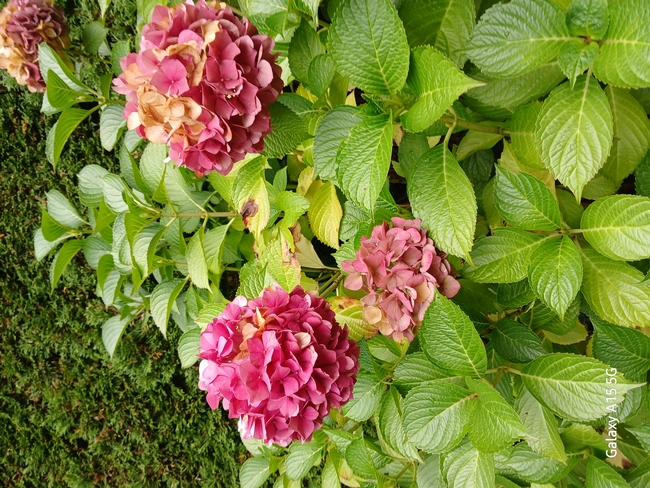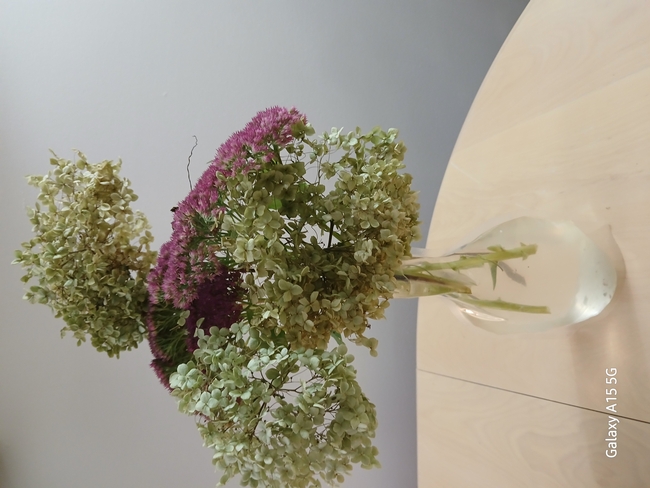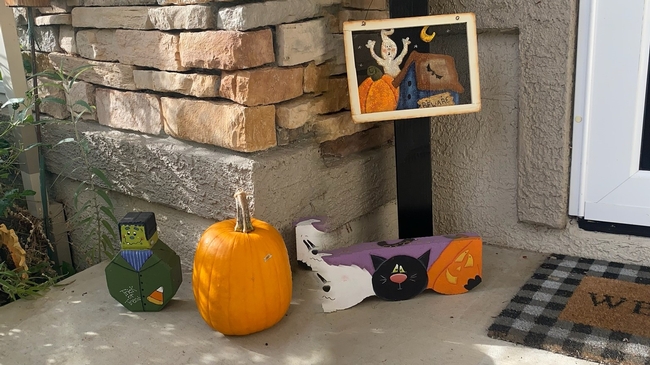- Author: Cindy Yee
We had this innocent-looking large bush in our front yard for probably 20 years. It had drip irrigation, but maybe that wasn't enough because as our area became drier and hotter with climate change, the bush stopped flowering. We had forgotten the name, but we recall buying it at Home Depot as a little one-foot plant.
Last year, I supplemented the drip with hose watering, and also periodic fish fertilizer. The mysterious bush rewarded me with a surprisingly glorious display of multi-colored blooms.
Sadly, it appears to have been the plant's swan song, because after the flowering, and in spite of regular watering, it inexplicably died shortly thereafter. I was devastated (ok that's an exaggeration, but I did feel quite sad). Plants that actually do well in my yard are precious. It was only then, while searching for a replacement, that I learned this is a highly invasive scotch broom. It was impossible to find for purchase at any big box store or independent nursery within driving distance.
The bright yellow broom is apparently most common and what many people know to be invasive. The one we had was a variegated version. After an exhaustive online search, I finally found what appears to be the closest to my bush, called 'Sister Rosie' Scotch Broom. Sadly, probably because broom is considered highly invasive in California, online retailers carrying the plant cannot ship it to me.
Interestingly, in the 20 years we had our broom, it never once produced a single seedling. Goodbye, gorgeous Sister Rosie. I didn't properly appreciate you until it was too late. Good thing you were just a plant, and not a person!
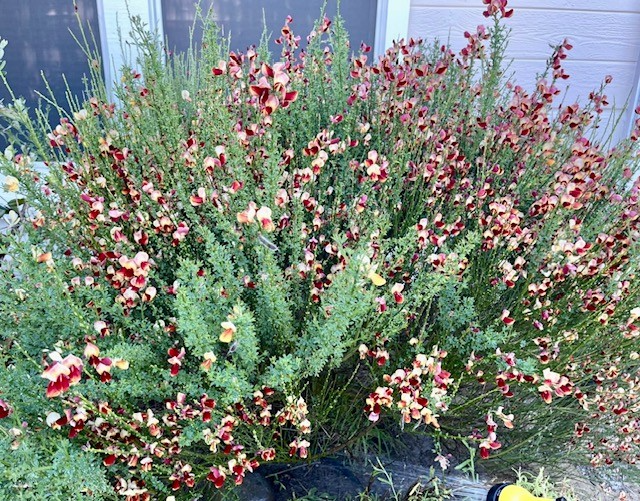

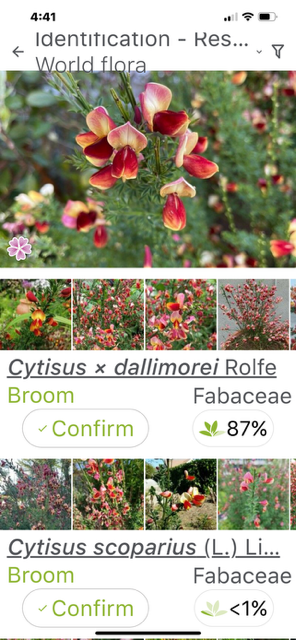
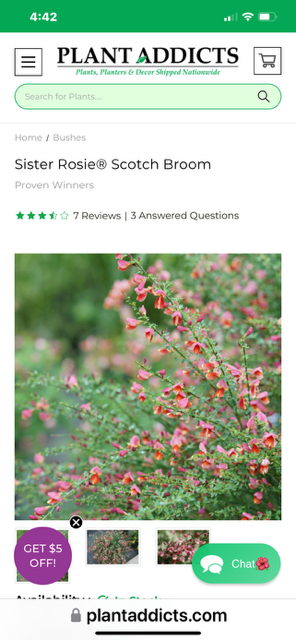
- Author: Loralei Dewe
When I decided to pursue my project of growing 3 citrus trees in 1 pot, I did a lot of research on high-density planting, so I would be successful.
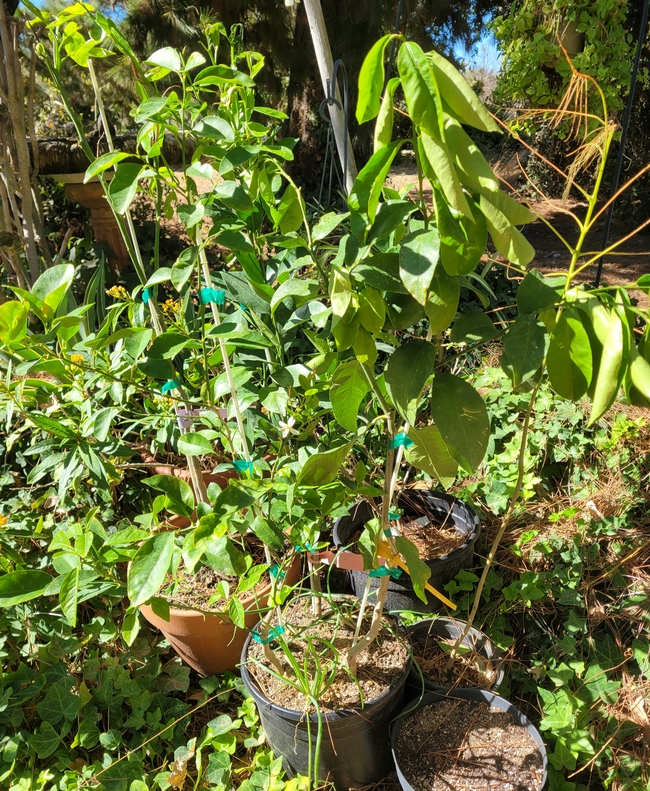
- Author: Erin Mahaney
When I was chatting with a few fellow gardeners at the recent plant exchange, the conversation turned to plants we wished we hadn't planted because they turned out to be too invasive for our gardens. Given our different microclimates in Solano County and irrigation practices, a well-regarded plant in one person's garden can be an unruly pest in another's. Here are the top three plants in my garden that I had to remove . . . and couldn't. (At least not for a very long time!) Do you have any plants to add?
Abutilon. Abutilon hybrids, commonly known as flowering maples, Chinese lanterns, or Chinese bellflower, are a large group of flowering perennials in the Malvaceae family. They are evergreen plants that range in height from 18 inches to 10 feet, providing a wide variety of landscape forms from shrubs to trees. The plants have large, bell-shaped flowers in a variety of mostly warm colors, including yellow, orange, pink, and red. They grow in sun and part shade (in hotter areas).
I planted my beautiful Abutilon in a partly shaded, narrow side yard as an espalier with the intent to enliven a narrow, otherwise barren, passageway. And it worked! The plant was lovely, it bloomed well, and it was easy to control in the narrow space. But, oh, the white flies! Every time I walked down the side yard it was like walking through a blizzard. I tried every method of pest control possible, to no avail. (Fortunately, the white flies didn't affect the rest of my yard.) I reluctantly concluded that if the white flies were happy, then the plant was unhappy despite its generally healthy appearance. And I was certainly unhappy with the white fly infestation. I removed the plant. Or so I thought . . . . That plant sent up new stems for over 5 years, and perhaps as long as 8 years. It was a constant battle to remove it for good. The plant couldn't fight whiteflies, but it certainly fought my efforts to eradicate it! Since then, I have longingly eyed other Abutilon plants, but I feared that if I planted another in a different location then I would have to live with it forever. I finally succumbed to temptation recently and planted a small shrub in a container. Thus far, we are both happy and I haven't seen any whiteflies.
Japanese anemone. When visiting a friend's house, I fell in love with the graceful blooms of their Japanese anemones massed in front of their house. I didn't notice, however, that the plants were planted within a concrete barrier that must have limited their spread. After planting my own patch, I then engaged in a lengthy battle to constrain the plants from moving into the rest of my yard. The plants propagate by underground rhizomes and I had read that it is easy to control them by removing new growth. That wasn't my experience. Even removing rhizomes didn't work, perhaps because I may have missed some segments. I would love to grow Japanese anemones and even though I understand that there are some less invasive varieties, I won't plant them again without installing some sort of barrier.
Showy milkweed. My current battle is with what I believe is Showy milkweed (Asclepias speciosa). A landscape designer selected this plant for the pollinator section of my garden and I've regretted the choice ever since. Yes, I am thrilled to feed Monarch caterpillars, watch them grow, and then admire the butterflies flitting about the yard, but it turns out there are far less invasive species of milkweed. This 4' tall species spreads by seeds and by underground rhizomes that form an expanding clump. In my yard, the rhizomes are buried over 8” deep, which makes them difficult to dig out completely when they are growing near other plants or irrigation lines. I try to pull the tender shoots as soon as they grow, but they return as soon as I turn my back. By midsummer, they have won the race. At best, my only hope now is containment.
I tried to eradicate the plants because they are in the wrong location and seem unhealthy (which may be a good thing because otherwise they would spread even more). The plants are tall and floppy and, no matter how much I tie them upright, they tend to keel over and crush my desirable plants. Because they spread so quickly and vigorously, an entire planting area is at risk of being taken over. Also, aphids love these milkweed plants and they become so thickly infested that no amount of pest management has helped. On the bright side, the ladybugs are having a feast.
There are other candidates for placement on this list (pineapple sage!). As always, the lesson I've learned is that it is important to research before planting and to be realistic about one's ability and willingness to monitor and control aggressive plants. Each plant is a learning experience!
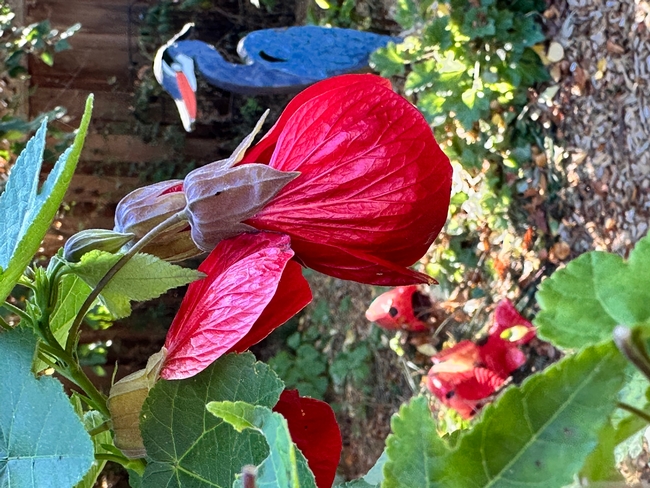
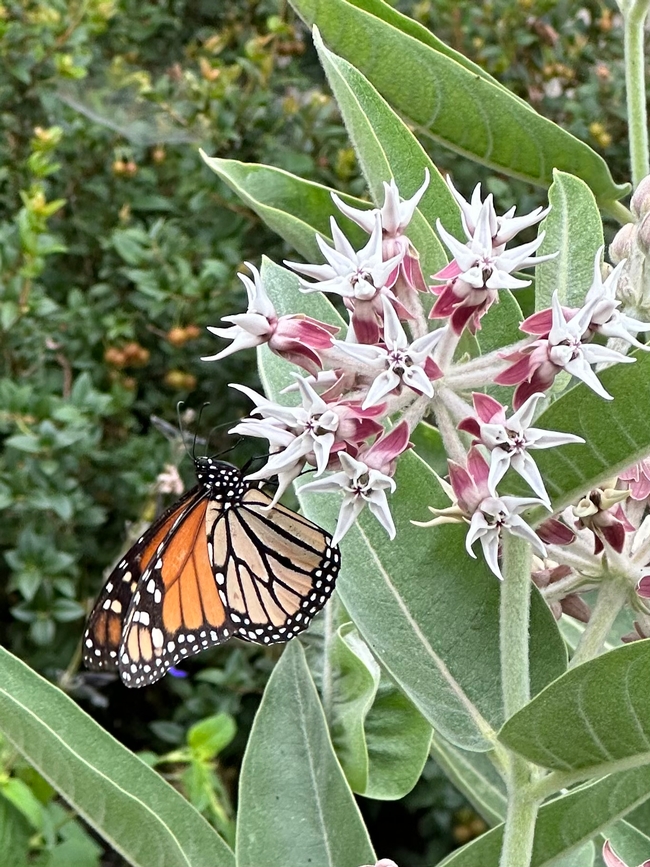
- Author: Lanie Keystone
Ever since I was a little girl seeing hydrangeas growing in front of my aunt's house in Michigan, I have loved them. Even before I knew what they were called, I have loved them. I truly think my love affair with hydrangeas began because I thought it was a cotton candy bush! And, you must understand, that cotton candy has always been my favorite food!
And so, when my husband and I moved into our first home so many years ago,--until this day, 28 moves later—I have always had “cotton candy bushes” growing in our yard. One of the first care questions I had was, what do you do about deadheading those delicious-looking blooms. Over the years I have learned that the variety of the hydrangea and the geographic place are the things that matte--so you don't accidentally cut off future flowers.
Why deadhead hydrangeas?
- Deadheading encourages hydrangeas to use their energy to make new flower heads instead of seeds.
- It stimulates new foliage and stem growth, creating greater opportunities for more blooms.
- It prompts the plant to develop stronger stems
- It makes the shrub look much neater
- Those gorgeous, dried blooms that you deadhead have a new life as a dried flower arrangement or in wreaths that are amazingly long-lasting.
It's important not to confuse deadheading with pruning. Pruning hydrangeas involves removing big sections of the plant's wood and stems. Deadheading is just clipping off the spent flowers and as little of the stem as possible.
When should you deadhead hydrangeas?
The best time depends on the type you grow. There are three general categories of hydrangeas based on how they bloom.
New Wood Hydrangeas
These are varieties that bloom on the current year's growth. They create their flower buds in early spring on new stems as soon as the shrub comes out of winter dormancy. New Wood Hydrangeas include smooth hydrangeas, panicle and some big leaf and mountain hydrangeas. You can actually deadhead new wood hydrangeas during the growing season. You can clip faded flowers into the fall and winter when they are dormant and have dropped their leaves, but it's important to deadhead them by late winter or risk cutting off new buds.
Old Wood Hydrangeas
__These are varieties that bloom on last year's stems. They create their flower buds for next year when they finish blooming in the current year. The flower buds sit on the plants all year, waiting until summer to bloom. Old wood hydrangeas include oakleaf hydrangeas, climbing hydrangeas and older big leaf and mountain hydrangeas. Don't do any deadheading or pruning after August. That's when they start developing flower buds for the next season. Again, trimming too late risks cutting off new buds.
Reblooming Hydrangeas
__These bloom again in the same season because they flower on both old and new growth. They tend to be newer hydrangea varieties that have been introduced in the last 20 years. Some rebloomers include “White Wedding”, the “Seaside Serenade” series and the “Let's Dance” series. Rebloomers should be deadheaded right after they finish their spring or summer blooming cycle. You get a second round of flowers if you clip off the old blooms right away.
How To Deadhead Hydrangea
Old wood hydrangea don't need to be deadheaded at all, unless you want to tidy up the shrub. Cut off the flower head by snipping the stem just above the first set of large leaves. Remember, the leaf axil is where the new bud will develop. If you cut too far down, you might injure or prevent next year's blooms. You can be more aggressive with hydrangeas that bloom on new wood. Cut the stem just above a set of full-sized leaves, but you can cut as much as a third of the stem off a new wood hydrangea to encourage a bushier, fuller shrub.
Neat Note: If you choose to leave spent hydrangea blooms on the shrub over the winter, this will provide a winter home for beneficial insects as well as interesting texture in your winter garden. And, there's nothing more wonderful than being reminded of the magnificent blooms of spring and summer, looking like delicious cotton candy!
* Some of this information comes from expert garden designer, Ryan McEnaney. He is spokesperson for Endless Summer hydrangea and First Editions plant brands.
